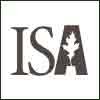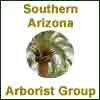
Specialists in All Things Trees
What is an Arborist?
An arborist is a specialist in the care and maintenance of trees. They differ from tree trimmers because they require special training on preserving tree health.
Why should I invest in Tree Care?
As the old saying goes, an ounce of prevention is worth a pound of cure. It is important (and less expensive) to prevent tree problems than to resolve them after the fact. We offer services that help your trees and shrubs thrive for this very reason.
What is the best way to correctly plant my tree?
The key to giving a tree a healthy start good planting procedures. A point that cannot be over-emphasized is the importance of matching the tree and its requirements to the planting site conditions. The tree must be able to tolerate site conditions such as wet or dry soils, size limitations or shade. When planting, the tree trunk flare (the area at the base of the trees trunk that becomes wider to form roots) should be just above grade approximately 1-2”. This will help as the tree will naturally settle. Call, text, or use our Contact Page to request additional information or to obtain a quote for our services.
Where should I be watering my tree?
The absorbing roots of trees can spread 1 ½ - 4 times as wide as the canopy. They are also typically within 1 foot of the soil surface. Watering the entire root zone will serve your tree well; however, most of the water will be absorbed outside of the canopy drip line.
How often should I water my tree?
This of course varies by plant species, rainfall and season; however, a good rule of thumb is to water when a soil probe (metal rod or even a screwdriver) won’t penetrate the ground more than 3-4 inches.
Where is the best place to make a pruning cut?
Pruning cuts should always be made just outside the branch collar (area of overlapping wood fibers that connects a branch to its trunk or parent branch). It can be very harmful to a tree if a pruning cut is made flush with the trunk or parent branch.
How do I know if my trees are healthy?
Trees may appear largely healthy, but that doesn’t always mean they are. The best way to find out is to visually inspect them. Are there any visual cavities, insects, animals or sawdust? If you see these, your trees may be damaged or heading towards it. Feel free to call, text, or use our Contact Page with any follow-on questions you may have.
How much is my tree worth?
At Arapahoe Tree Surgeons, we consider all trees to be priceless. They provide numerous
social, environmental, and economic benefits. Try out the





